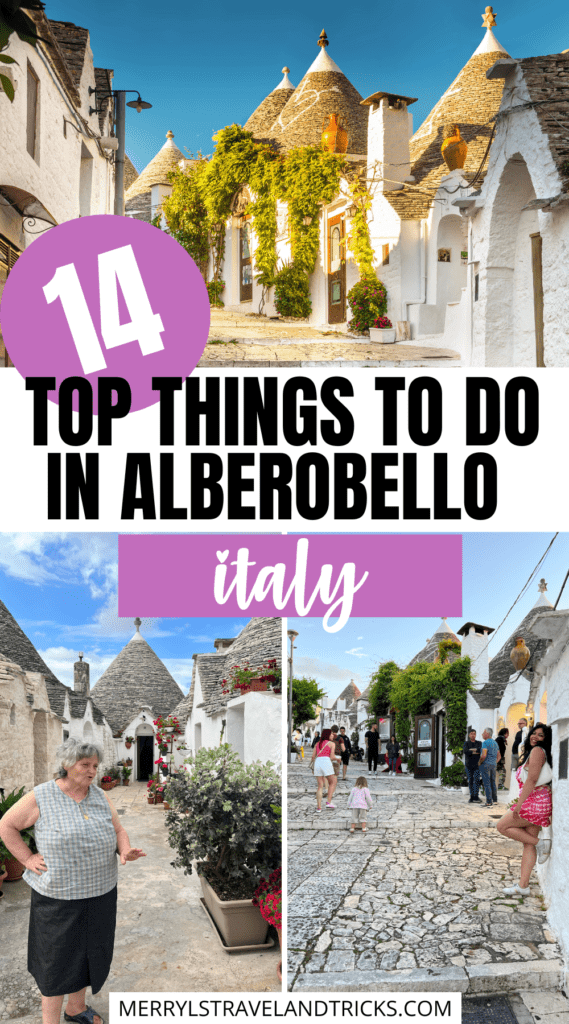14 Best Things to do in Alberobello
Alberobello is a small town located in the region of Apulia, in southern Italy. Known for its unique trulli houses, Alberobello is also home to several historic churches and museums, including the Trullo Sovrano, which is the largest trullo in the town. This little town is truly a wonder, straight out of a fairytale.
The town's history can be traced back to the 15th century when the area was part of the Kingdom of Naples. The Trulli houses, which are made of limestone and have conical roofs, were built by the local farmers as a way to avoid paying taxes on permanent dwellings. Today, these distinctive houses are a symbol of the town's cultural heritage.
So get ready to be enthralled by the beautiful memories that you're going to make in Alberobello!
Getting to Alberobello:
The easiest way to reach Alberobello is by car, as it allows you to explore the surrounding countryside at your own pace. If you're driving from Bari, take the SS16 towards Brindisi and then follow the signs for Alberobello. The drive takes about an hour and a half.
If you don't have access to a car, you can also reach Alberobello by train or bus. Trains run regularly from Bari to Alberobello, with a journey time of about an hour and a half. From the train station in Alberobello, it's a short walk to the town centre. Some buses run from Bari to Alberobello, with a journey time of about two hours.
Top Things to do in Alberobello
Explore the Trulli Houses
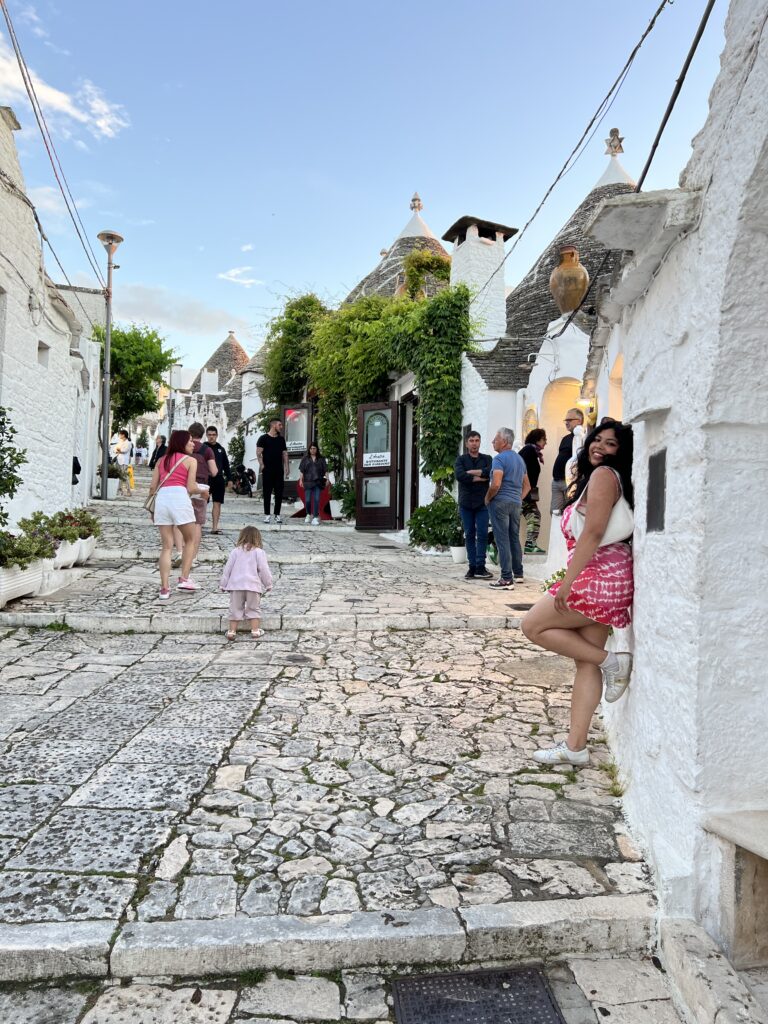
The main attraction in Alberobello is undoubtedly the trulli houses. These structures are made of limestone and have a conical roof made of stone slabs. They were originally built in the 14th century as temporary shelters for farmers and shepherds, but over time they evolved into permanent residences. Today, there are over 1,500 trulli houses in Alberobello, many of which have been converted into shops, restaurants, and hotels.
You can explore the trulli houses in the Rione Monti and Aia Piccola districts of Alberobello. These areas are made up of narrow streets and alleyways lined with trulli houses, creating a charming and unique atmosphere. The trulli houses are often decorated with colourful flowers and plants, adding to their beauty.
Rione Monti
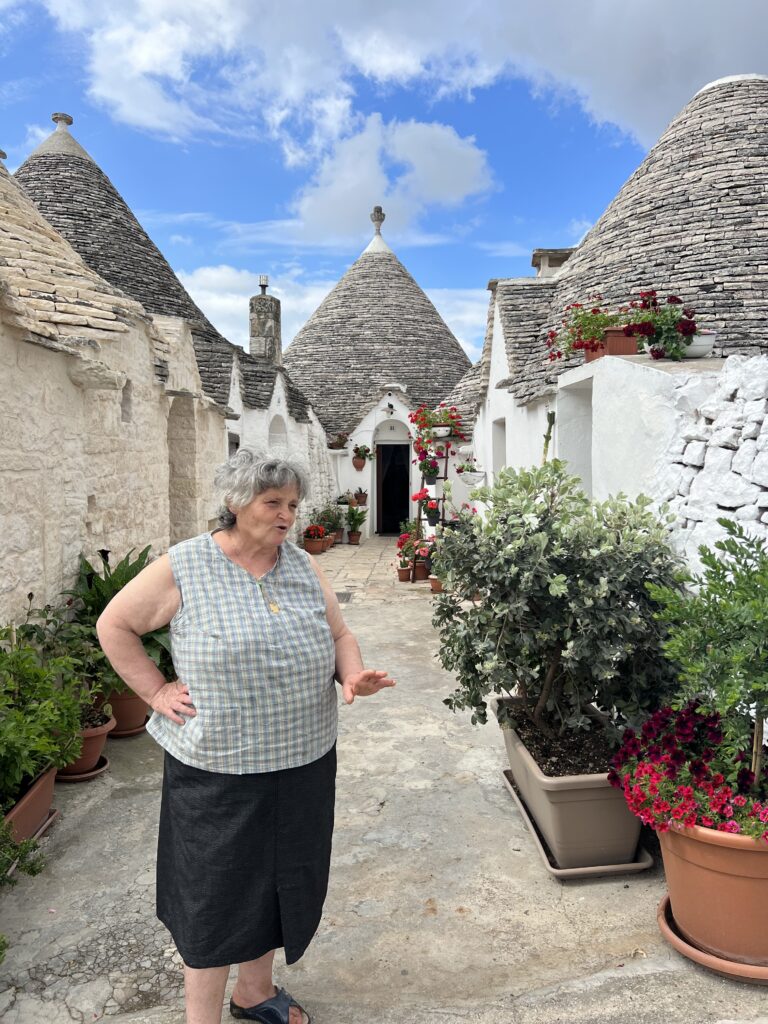
The southern district of the town, known as "Rione Monti," comprises of trulli houses.
It has been officially recognized as a national monument since the 1920s, along with the adjacent "Aia Piccola" quarter. Both of these areas have been declared UNESCO World Heritage Sites. In the present day, the lanes in this district are predominantly used for commercial purposes, particularly housing tourist shops, which gives rise to a vibrant and fascinating bazaar atmosphere.
While exploring Rione Monti, you'll notice that shop owners often bask in the sunlight, sitting or standing outside their little shops, as they ask you to step inside and browse their offerings. If you want to have a closer look inside the Trulli, this is a wonderful chance to check out their little stores as well as the Trulli. Along with that, you can also take home a souvenir to remember this place by!
While exploring the area, I recommend taking a spontaneous approach, allowing yourself to aimlessly wander and explore at your own pace. You'll stumble upon serene streets and remarkably picturesque corners hidden away from the main bustling streets, providing ample opportunities for memorable photographs.
Trullo Siamese
In the Rione Monti area, one of the most renowned trulli structures is the Trullo Siamese. Unlike many connected roofs found in Alberobello, this particular trullo consists of two separate trulli combined under one roof. The roof itself has an elliptical shape, appearing as if two roofs have seamlessly merged.
The Trullo Siamese is linked to a legend involving two brothers named Antonio and Pasquale. However, there is a possibility that this tale is not merely a legend, but rather based on actual events. The brothers constructed two trulli for themselves, each sitting on a sturdy stone foundation and sharing a single roof. Over a tiff about a woman, one brother created a separate entrance for himself and thus, one big trulo house became a trulli.
You can wander inside and check out this beauty.
Church of St. Anthony of Padua
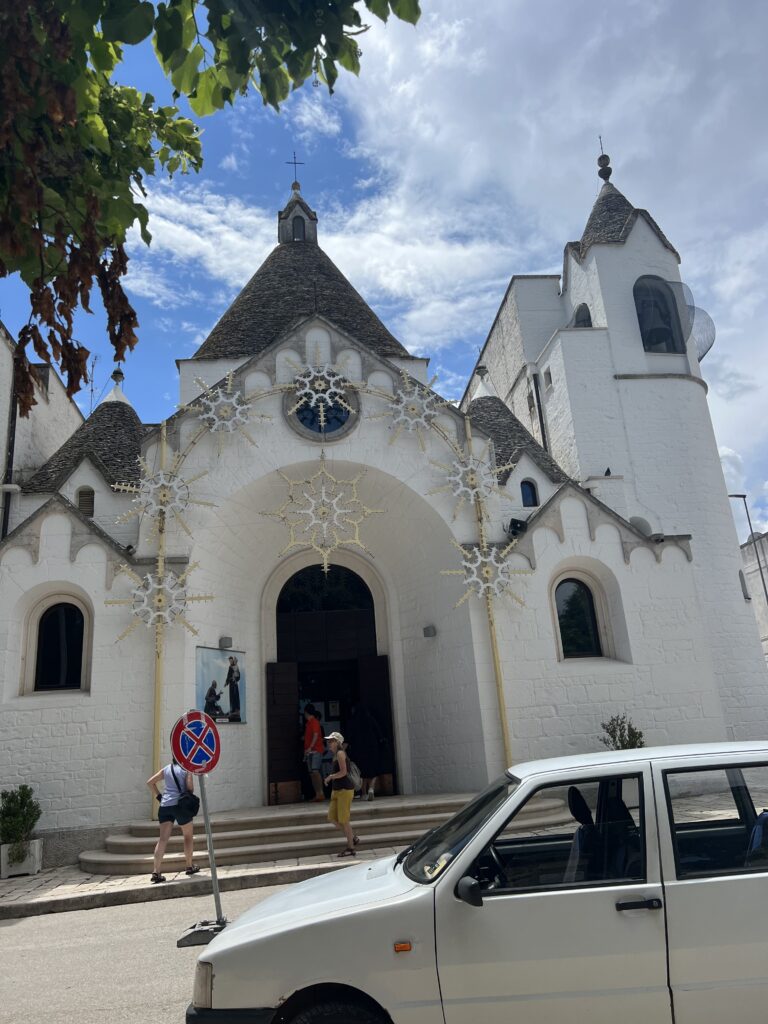
Situated atop a hill within the Rione Monti district, the Church of Saint Anthony of Padua was constructed in 1926. Despite its substantial size, the building was created with the traditional methods and principles of the Trullis of Alberobello. While mortar was employed in its construction, the church faithfully embraced the distinctive style and standards associated with trulli architecture.
The primary dome of St. Anthony's Church stands tall at a height of 18 meters. Positioned to the right, the bell tower of the church takes the form of a Romanesque-style tower, resembling the bell tower of the Basilica of St. Nicholas in Bari. As is typical of churches in Apulia, the interior of the church is characterized by its modest design. Notably, within the altar section of the church, there's a beautiful fresco to admire, created by the renowned Apulian artist, Adolfo Rollo.
Rione Aia Piccola
The district, known as "Rione Aia Piccola," derives its name from an ancient courtyard located on the southeastern slope of Alberobello. This yard, relatively smaller compared to another nearby yard, was primarily utilized for collecting tithes. Now, the entire district represents the most serene and authentic aspect of the city. It remains inhabited by residents and stands apart from the bustling atmosphere found in the other Trulli districts.
Here, you can still experience the enchantment of this distinctive form of housing. Just like the Rione Monti, this place has also been recognized as a national monument since 1930 and designated as a UNESCO World Heritage Site since 1996.
This is a quieter area than its counterpart Trulli area. So if you're looking to explore Alberobello, in peace, this is definitely a good place to start!
Casa D' Amore
Before the official recognition of the city in 1797 by King Ferdinand IV of Naples, the local Counts had prohibited the construction of permanent buildings in Alberobello. Instead, only dry stone structures were permitted. The house belonging to Francesco D'Amore marked a significant transition from an "unlawful" town to a royal one. A Latin inscription on the walls of his house declared, "First building erected from royal authority."
Francesco D'Amore became the first citizen to construct his house using mortar in Alberobello. Subsequently, buildings and trulli were constructed using a mixture called "malta," which consisted of lime and local red earth called "Vuolo." In many of the ancient buildings in Alberobello, one can still observe this distinctive cement between the stones.
Visit the Trullo Sovrano
The Trullo Sovrano is the largest trulli house in Alberobello and is now a museum. It was built in the 18th century and has two floors, with the upper floor being used as a hayloft and the lower floor as a living space. The Trullo Sovrano has been restored to its original condition and now houses a museum showcasing the history and culture of the Trulli houses and the Puglia region.
Basilica of Saints Cosmas and Damian
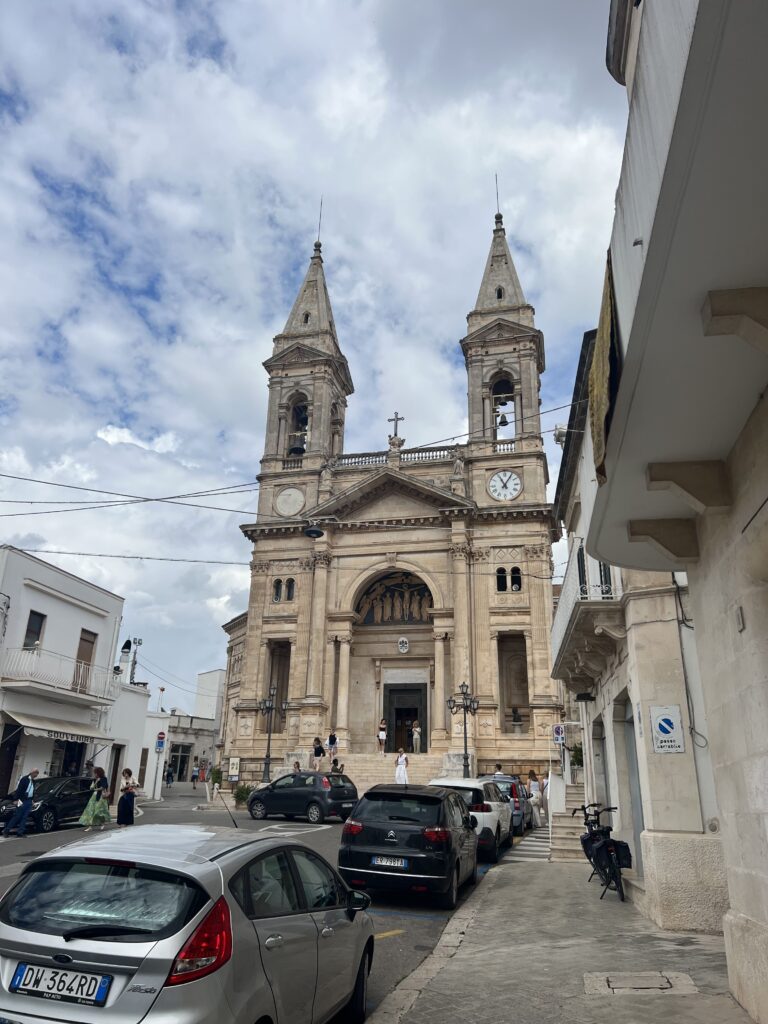
Prominent features in the city's skyline are the twin bell towers of the Church of Saints Cosma and Damian. Situated on the northern side of the historical centre, this monument holds significant importance in the city. The current structure of the church dates back to 1885 and is the creation of renowned architect Antonio Curri, a prominent figure in Alberobello. The church is intimately connected to the rituals associated with the saints, as it houses two wooden statues dating back to 1782 and 1784, as well as a reliquary containing fragments of the saint's bones.
Architect Antonio Curri's project spanned several years and was finally completed in 1914. The only aspect left unfinished was the grand dome located at the centre of the church's Latin cross shape. Each year, on the 26th and 27th of September, the city celebrates the holiday dedicated to the saints. This festive occasion attracts a multitude of pilgrims from neighbouring towns, who traditionally undertake the entire journey on foot. So if you're planning a visit, maybe you could catch a glimpse of this celebration!
Shop for Local Handicrafts
Alberobello is known for its local handicrafts, including pottery, lace, and embroidery. You can shop for these products in the many small shops and boutiques located throughout the town. Some of the most popular souvenirs include handmade ceramics, embroidered linens, and lace tablecloths.
Enjoy Local Cuisine
Puglia is renowned for its delicious cuisine, and Alberobello is no exception. Alberobello also boasts a rich culinary tradition, with plenty of delicious foods to try while exploring this beautiful town. No visit to Alberobello would be complete without trying the local bread, known as pane di Altamura. This bread is made from wheat grown in the nearby town of Altamura and is known for its distinctive texture and flavour.
The Pasqualino is also worth a try when you're in Alberobello. This 'sandwich' is famous in the town, as it serves tuna fish, capers, salami and cheese inside a loaf of bread. The name Pasqualino comes from the 'inventor' Pasquale Dell'Erba in 1966.
If you're a fan of seafood, you won't want to miss the chance to try the local speciality of octopus salad. This dish is made from a tender, boiled octopus that is served with olive oil, lemon juice, and fresh herbs. It's a refreshing and light dish that is perfect for a hot summer day.
For something sweet, make sure to try the pasticciotto. This pastry is made with a shortcrust pastry shell and is filled with a creamy custard. It's a popular dessert throughout Puglia, and you can find it at many bakeries and cafes in Alberobello.
The town also has many excellent restaurants and trattorias serving traditional Pugliese cuisine, as well as local wines such as Primitivo and Negroamaro. You could also book a food tour to get your digestive juices running, with an array of delicacies lined up, just for you!
Take a Cooking Class
If you're keen on learning how to cook traditional Pugliese dishes, there are several cooking classes available in Alberobello. These classes are led by local chefs and allow visitors to learn how to make dishes such as orecchiette pasta, focaccia bread, and seafood dishes. Many of the classes also include a visit to a local market to shop for ingredients.
Visit the Selva di Fasano
The Selva di Fasano is a nearby forested area that is popular for hiking and picnicking. The forest covers over 4,000 hectares and is home to a variety of wildlife, including deer, foxes, and wild boars. You can also enjoy panoramic views of the surrounding countryside from the forest's highest point, which is Monte San Michele. The Selva di Fasano is an ideal place to escape the hustle and bustle of Alberobello and enjoy some fresh air and nature.
Attend a Local Festival
Alberobello hosts many festivals throughout the year that celebrate the town's culture and traditions. One of the most popular is the Festa dei Santissimi Medici, which takes place in July and features a procession of the town's patron saints through the streets of Alberobello. Other festivals include the Festa di San Rocco in August and the Festa di San Giuseppe in March.
Explore the Caves of Castellana
The Caves of Castellana are a series of underground caves located just a short drive from Alberobello, in Bari. The caves are over 3 kilometres long and feature stunning stalactites and stalagmites. You can explore the caves on a guided tour and learn about their history and geology. The Caves of Castellana is a unique and unforgettable experience, so make sure you add it to your bucket list on your last day in Alberobello.
FAQS
What are the local transportation options within Alberobello for tourists without cars?
Alberobello is a small town, and most of its attractions are within walking distance. However, visitors can also use local buses or taxis to travel between different parts of the town or to nearby attractions.
Can visitors stay in a Trullo house, and what are the options for such unique accommodations?
Yes, visitors can stay in Trullo houses, which are unique cone-shaped buildings typical of Alberobello. Many Trullo houses have been converted into charming accommodations, including hotels, bed and breakfasts, and rental homes, providing visitors with an authentic experience of staying in these traditional dwellings. Check out the best trullo hotels in Alberobello here.
Are there specific times of the year when Alberobello hosts cultural or historical festivals worth attending?
Yes, Alberobello hosts several cultural and historical festivals throughout the year. One of the most popular events is the "Sagra del Pane di Alberobello" (Alberobello Bread Festival), usually held in September, celebrating the town's culinary traditions. Additionally, religious festivals, folklore events, and seasonal celebrations take place, offering visitors a chance to immerse themselves in the local culture.
Like this post? Save it for later!
